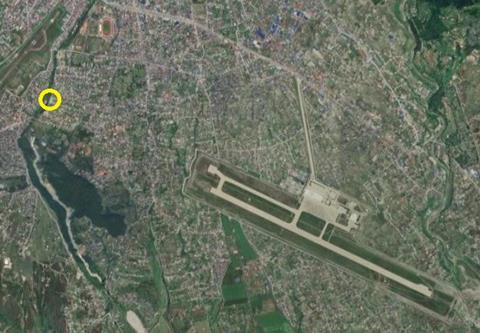Nepalese investigators probing the Yeti Airlines ATR 72-500 crash at Pokhara have disclosed that both propellers feathered just after the flying pilot asked for a further extension of the flaps.
The aircraft had been descending to runway 12 following a service from Kathmandu on 15 January.
Its landing-gear was deployed and the flaps set at the 15° position, before the crew disengaged the autopilot at about 720ft.
Some 20s after the flaps were set, the flying pilot – a captain undergoing familiarisation with an instructor – called for a further flap extension from 15° to 30°.
But although the instructor replied, “Flaps 30”, the flight-data recorder did not record any movement of the flap surface, states the Nepalese air accidents commission in preliminary findings.
The inquiry reveals that, instead, the propellers of both engines simultaneously lost rotation speed, the level falling below 25%, and the torque started declining to zero.
It says this is consistent with both propellers feathering, and no longer generating thrust.
The feather setting for the ATR 72 is on the condition lever, which is situated immediately to the left of the flap lever on the throttle quadrant.
Cockpit-voice recorder information indicates caution chimes sounded in the cockpit. The crew proceeded with the approach, carrying out the ‘before landing’ checklist and turning left onto the base leg.

As the aircraft reached 500ft – the stabilisation height for a visual approach – it was banking at 30°.
Moments afterwards, a click was heard and the flaps extended to the 30° position, but only when landing clearance was given a few seconds later did the pilot mention that the engines were not producing power.
The throttle levers were advanced – initially to the 62° setting and then to maximum – just before the aircraft initiated its final turn at 368ft.
Investigators state that the pilot handed control to the instructor, again remarking that there was no power, and the stick-shaker activated at 311ft, indicating the risk of a stall. A second stick-shaker triggered immediately afterwards and the aircraft banked abruptly to the left, striking the ground 6s later.
None of the 68 passengers and four crew members survived the accident.
While the inquiry is yet to reach conclusions, the commission points out that the ATR 72’s propellers can be feathered automatically – although locks prevent dual feathering in such cases – or feathered manually by the crew, normally in the event of an in-flight engine shutdown.
No valid data is collected by the flight-data recorder once the propeller speed falls below 25%, the inquiry says, but at the point of feathering the recorder did not show any parameter anomalies in either Pratt & Whitney Canada PW127F engine.


























